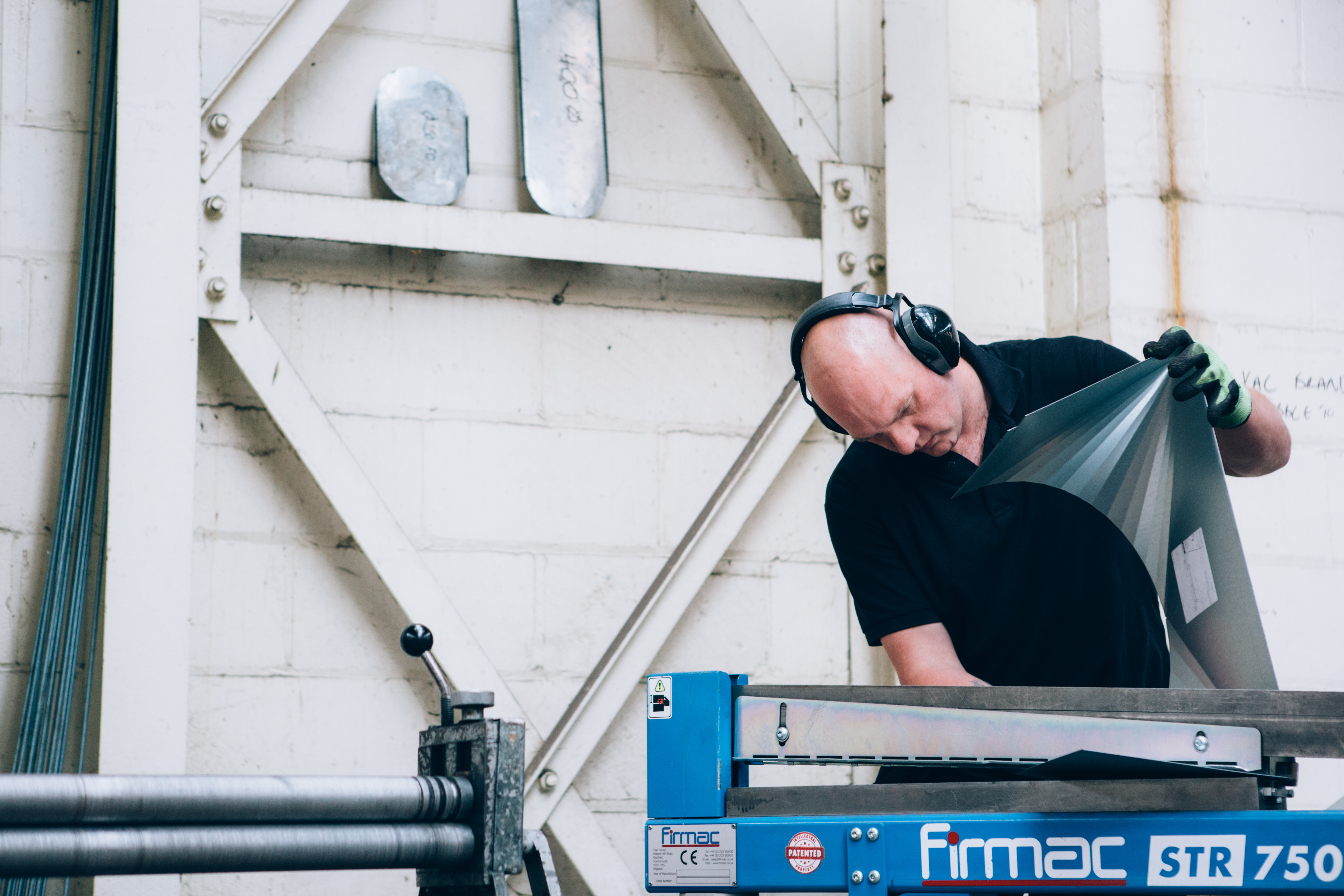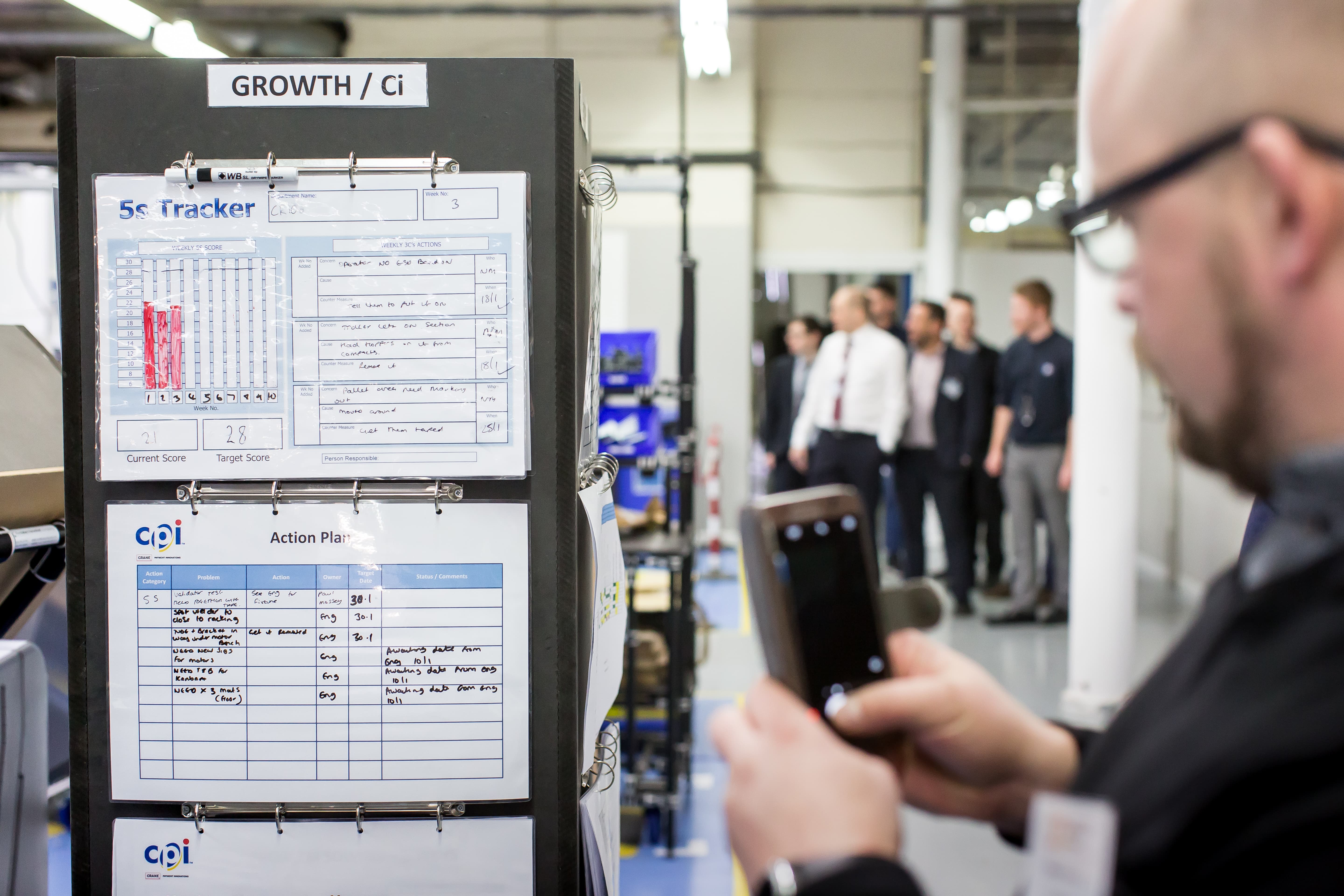Data, data everywhere - but where do I begin?
8 May 2018
For a manufacturing business, getting to grips with the data that is captured and how to use this in decision making can be the difference in surviving, or thriving. In his latest blog, Steve Wilkinson, Specialist Manufacturing Advisor at the Business Growth Hub speaks to industry experts about how they use data, and suggests his tips for starting to measure your business.
Last year’s Industrial Strategy identified four Grand Challenges which set out priorities for industrial sectors to position the UK as a world leader. One of these Grand Challenges focuses on something that I support manufacturing and engineering firms with on a day-to-day basis. Data.
Tim Monaghan, European President, Diodes Incorporated and one of the Greater Manchester Manufacturing Champions said in last year’s Big Question report on productivity:
“It takes time to set up effective measurement systems, but it is time well spent. The data will tell you where the biggest benefit can be had and whether you are making progress towards it. Almost as importantly it will help you to bring people along with you and give them confidence in your intentions.”
McKinsey and Company’s ‘Manufacturing: Analytics unleashes productivity and profitability’ report from August 2017 found that data adoption helps manufacturers to identify bottlenecks in production and move towards predictive maintenance. The benefits of predictive maintenance include the potential to increase gross profit by 4-10%, reduction of downtime by 30-50% and increasing machine life by 20-40%.

Pure Fabs invested in new equipment to eliminate waste in production.
Don’t mention KPIs
With outputs like this, what is stopping manufacturers from measuring data? Sometimes just the language of measurement can be off-putting to a busy factory owner. Key Performance Indicators (KPIs), can sound like management speak, and an activity which is time-consuming and unnecessary. However, delve a little deeper and most businesses already have an informal measurement system in place which helps to influence decision making.
One of my colleagues recently supported Pure Fabs, a Bolton based metalworks manufacturer who were able to reduce waste in their processes by 7% by implementing 5S and Visual Management. The business began measuring the 8-wastes and they were able to set a benchmark for productivity as a result.
Pete Connor, Director at Pure Fabs said:
“We analyse every detail now. It has helped us understand the ‘hidden wastes’ within the business and the team are now as focused on saving time as they had previously been on saving materials.”
Once the business started to measure wasted time, they were able to make improvements by introducing standard operating procedures (SOPs) and investing in a new duct former which eliminated 30 minutes of production time per duct.
"Accurate data is vital for a manufacturing firm, and provides truth about why the business, and its processes, are performing as they are."
Dr Tony Bannan OBE, Chief Executive, Precision Technologies Group and Manufacturing Champion
Keep it critical
I spoke to Dr Tony Bannan OBE, Group Chief Executive at Precision Technologies Group (PTG) and one of the Greater Manchester Manufacturing Champions, and asked how his business uses KPI’s to measure performance, and in what way PTG has adopted Industry 4.0 technologies. PTG is a world-leading manufacturer of special-purpose machine tools and components, and the business has ‘designed in’ Industry 4.0 principles to its machine and production technologies.
“Accurate data is vital for a manufacturing firm, and provides truth about why the business, and its processes, are performing as they are. However, KPIs can overwhelm even the most advanced manufacturing business if the measurements aren’t focused on what is really critical, either in the business at large, or in the quality of what’s produced.
“It is not uncommon for a business to start measuring a large number of KPIs, and within a couple of months realise that the process has become burdensome and unhelpful. At PTG we have 7-8 critical business measures that we focus on, including sales and production targets, but one of the most crucial is utilisation of people and machinery; we aim to keep this above 80%, but it can creep downwards unless you stay focused on it.
“In our Holroyd machines we’ve built ‘intelligence’ into the control software and machine electronics to provide in-process scanning of components during the manufacturing process, integrated to automatic correction and tool adjustment systems. These I4.0 functions are networked and highly automated so that key parameters and data can be communicated within and outside the company, making remote monitoring, data logging and diagnostics possible.”
It's all about transparency
Tony says:
“I suggest that a business use a process or department as a ‘pilot’, and start to measure carefully. Proceed one step at a time, by continuous improvement. Understand the process. Don’t try to ‘blitz’ everything at once. Carefully select a small number of key data, observe results, set KPI targets and benchmarks, and show that the data collected is valuable. Then gradually extend the process to improve across more functions."

Visual Management boards at Crane Payment Innovations in Oldham report on performance within a production cell.

Dr Tony Bannan, Chief Executive, Precision Technologies Group

Visual Management boards at Crane Payment Innovations enable the entire workforce to understand the value of measuring data.
This is reiterated by Andrew Peters, Managing Director, Siemens Digital Factory, Congleton and fellow Manufacturing Champion in the recent Big Question report. He said:
“My main advice (to increase productivity) is to establish transparency around the factory with KPIs. Having established this, given many small businesses don’t have the luxury of additional resource, start small.
“Choose one production area and identify small improvements which can be made to production. Engage the team by setting up display boards which show progress being made. Daily stand ups are a great tool for creating transparency.”
Pete Connor has adopted this strategy at the Pure Fabs factory. He said:
“I take a Gemba Walk around the site most days, and spot test the guys on the ‘eight deadly wastes’. This isn’t just an opportunity for me to check all is well, it opens up two-way dialogue and the team have seen the benefits of continuous improvement. They have seen that if they can suggest a way to do something better I will listen to them and we make the changes together.”
What is clear from the insights here is that setting up these systems will take careful thought and time, but once they are in place, the results can be hugely impactful on business success. In my view, starting to make decisions based on data is the point when a business can stop prioritising ‘surviving’ and focus on ‘growing’.
Where do I begin?
If you would like to start your data journey, here are my tips for success.
- Prioritise
The most crucial thing is to identify what your business priorities are, often this will be your monthly sales turnover, costs, current orders and the resource required to meet demand – in all likelihood you are already reporting on this in your management accounts. It may be that you are facing a challenge with lead times, resource planning or machine downtime, if this is the case, establish how you can measure and report on this. - Start small
Define your top three priorities and start to measure. For example, a common business objective is to reduce customer lead times.
It’s quite simple to ascertain what your average lead times are, by reviewing your order and delivery data. Review this data alongside your promised lead times and you can set your first benchmark and start identifying how to improve this. In future you will quickly identify any problems that require attention. - Be transparent
Set up a display board and update this on a daily, weekly or monthly basis – whichever is feasible. This will keep your team informed of what they’re working towards. A smart business will be looking at their costs on a regular basis and identifying potential issues with suppliers, materials and cost per unit, during the month, and looking at immediate changes which can be made.
For more support contact the Manufacturing team to find out how fully-funded support or grant funding can help you achieve your growth ambitions.
Free factsheets
The GC Business Growth Hub have developed a range of factsheets on these subjects which you can download for free. Join the Manufacturing Network and download the KPIs and performance Measurement and Visual Management factsheets to start your journey.